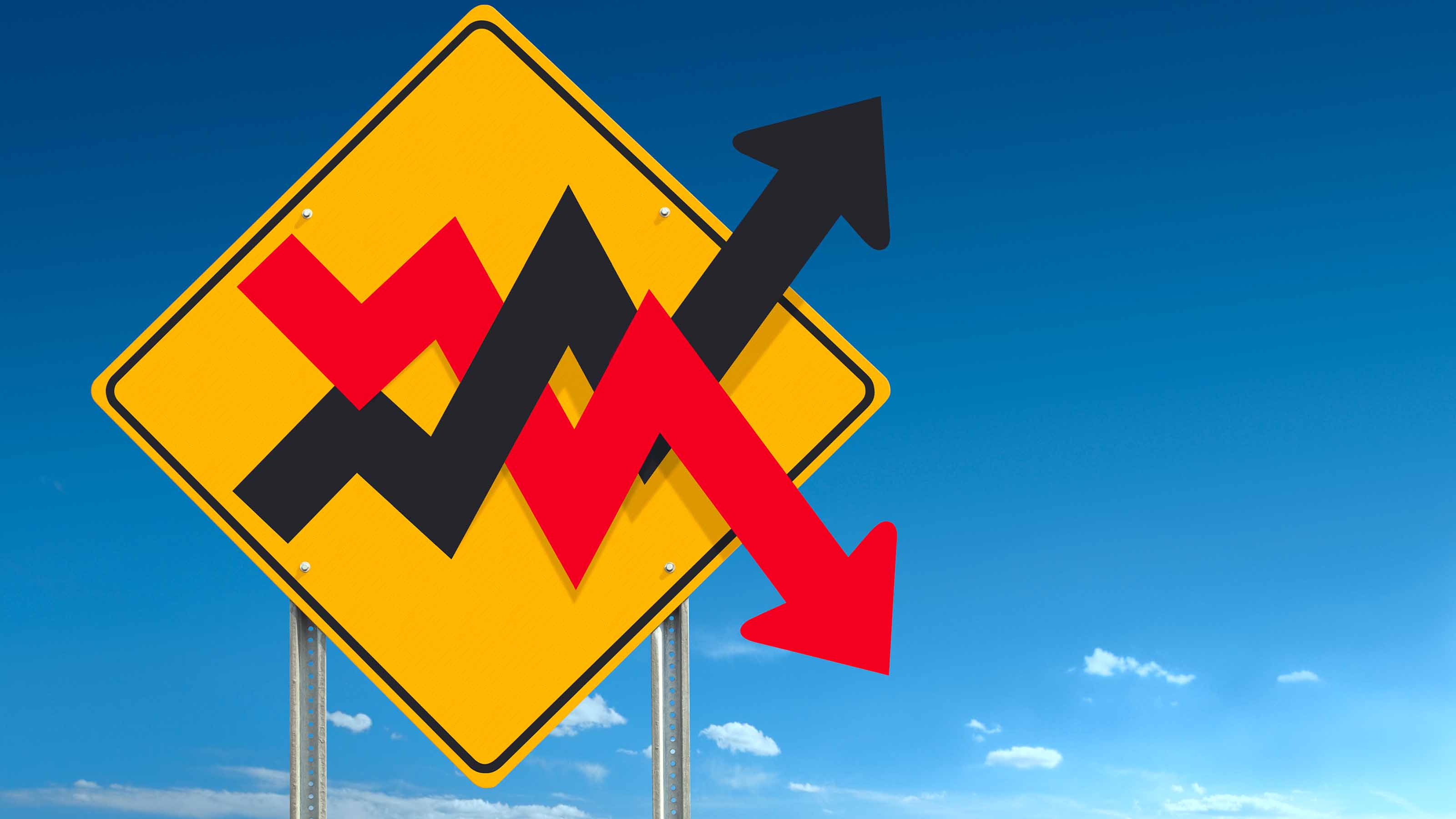Our High-Yield, No-Stocks Tofurky Portfolio
This annually updated portfolio cooks up income and some growth without using any common stocks.

The 392 dividend payers in Standard & Poor’s 500-stock index yield, on average, a bit less than 3%. A few, such as AT&T, pay close to 6%. Pretty tempting, considering that ten-year Treasuries yield 2.1% and that cash pays nothing. Trouble is, the stock market is looking more like a casino and less like an efficient arbiter of what companies are really worth. So if you’re, say, a retiree looking to supplement pension income, you’re trapped between the proverbial rock and hard place: a Federal Reserve bent on keeping interest rates microscopic for some time and Wall Street’s obsession with stocks as poker chips.
Is there a solution for this dilemma? How about Tofurky? For several years, I’ve produced a holiday-season portfolio that I named after the ersatz soy-and-tofu turkey roast. A Tofurky portfolio cooks up income and some growth without using any common stocks. Instead, the portfolio includes bonds and stuff like oil wells, pipelines, mortgages and bank loans. Yes, all of these investments can lose value, but in general they tend to be far less volatile than the stock market. As a whole, the portfolio described below yields 5.7%. Here’s the recipe:
Assorted Bonds: 30%
Split this money among a closed-end municipal bond fund (see CASH IN HAND: Amazing Tax-Free Income From Closed-End Muni Bond Funds), a high-yield bond fund and a high-quality corporate bond fund. Examples include DWS Municipal Income Trust (symbol KTF), Fidelity Capital & Income (FAGIX) and iShares iBoxx Investment Grade Corporate Bond ETF (LQD). They yield 7.1%, 6.4% and 4.0%, respectively.
From just $107.88 $24.99 for Kiplinger Personal Finance
Become a smarter, better informed investor. Subscribe from just $107.88 $24.99, plus get up to 4 Special Issues

Sign up for Kiplinger’s Free Newsletters
Profit and prosper with the best of expert advice on investing, taxes, retirement, personal finance and more - straight to your e-mail.
Profit and prosper with the best of expert advice - straight to your e-mail.
Energy Pass-Throughs: 20%
Royalty trusts and master limited partnerships must pass along to shareholders almost all of the income they generate. A bedrock pick is BP Prudhoe Bay Royalty Trust (BPT), whose yield from Alaskan crude typically ranges from 9% to 12%. Pair it with a pipeline and storage-tank concern such as Magellan Midstream Partners (MMP), which yields 5.2%.
Preferred Stocks: 10%
An index of preferreds lost 8% in the third quarter, but that’s the first stumble in this category since the 2008 credit meltdown, and it’s reversible. My choice is iShares S&P U.S. Preferred Stock Index ETF (PFF), which yields 6.8%.
Foreign Bonds: 10%
The recent dollar rally cut the value of foreign debt in dollar terms, but that, too, can -- and almost surely will -- reverse. Use Wisdom Tree Emerging Markets Local Debt ETF (ELD), which owns short-to-medium-term government debt and yields 5.1%, and T. Rowe Price International Bond Fund (RPIBX). It owns corporate and government debt, mostly in Europe and Japan. It aims to hold down risk and so yields just 2.3%.
Bank Loans: 10%
Nervous investors dumped the kinds of adjustable-rate bank loans that Fidelity Floating Rate High Income (FFRHX) invests in, so the fund lost nearly 3% in the third quarter. The good news is that the fund’s yield is back up to 4.6%. Companies that take out floating-rate-loans are usually lower quality, but bank loans are at the top of the pecking order in case a company fails, so these loans are actually fairly safe.
Mortgages: 10%
Put half in safe Ginnie Maes, which are packages of government-backed mortgages. Vanguard GNMA (VFIIX) is as stable as they come and yields 3.3%. Put the other half in something riskier: a real estate investment trust that buys mortgages. My longtime favorite is Annaly Capital Management (NLY), which yields a fat 15.1%. Annaly experienced a rare slip in September, but that makes this unusual REIT more attractive, in my view.
Wild Card: 10%
I don’t find gold, Treasury bonds or crops attractively priced, so I suggest putting the final 10% in cash. It doesn’t yield anything, but it’s good to have on hand for scooping up assets that investors trash unfairly -- a common-enough occurrence.
Profit and prosper with the best of Kiplinger's advice on investing, taxes, retirement, personal finance and much more. Delivered daily. Enter your email in the box and click Sign Me Up.

Kosnett is the editor of Kiplinger Investing for Income and writes the "Cash in Hand" column for Kiplinger Personal Finance. He is an income-investing expert who covers bonds, real estate investment trusts, oil and gas income deals, dividend stocks and anything else that pays interest and dividends. He joined Kiplinger in 1981 after six years in newspapers, including the Baltimore Sun. He is a 1976 journalism graduate from the Medill School at Northwestern University and completed an executive program at the Carnegie-Mellon University business school in 1978.
-
 'Donroe Doctrine' Pumps Dow 594 Points: Stock Market Today
'Donroe Doctrine' Pumps Dow 594 Points: Stock Market TodayThe S&P 500 rallied but failed to turn the "Santa Claus Rally" indicator positive for 2026.
-
 The Wealth Equation: Balancing Money and Stress
The Wealth Equation: Balancing Money and StressSponsored Don’t let assets be a liability that strains your family.
-
 Is Your Emergency Fund Running Low? Here's How to Bulk It Up
Is Your Emergency Fund Running Low? Here's How to Bulk It UpIf you're struggling right now, you're not alone. Here's how you can identify financial issues, implement a budget and prioritize rebuilding your emergency fund.
-
 The Most Tax-Friendly States for Investing in 2025 (Hint: There Are Two)
The Most Tax-Friendly States for Investing in 2025 (Hint: There Are Two)State Taxes Living in one of these places could lower your 2025 investment taxes — especially if you invest in real estate.
-
 The Final Countdown for Retirees with Investment Income
The Final Countdown for Retirees with Investment IncomeRetirement Tax Don’t assume Social Security withholding is enough. Some retirement income may require a quarterly estimated tax payment by the September 15 deadline.
-
 Why Investors Needn't Worry About U.S. Credit Downgrade
Why Investors Needn't Worry About U.S. Credit DowngradeFitch Ratings The United States saw its credit rating downgraded for just the second time in history, but experts aren't worried about the long-term damage to stocks.
-
 Income-Investing Picks for a Recession
Income-Investing Picks for a RecessionInvesting for Income Some consequences of an economic downturn work to the benefit of fixed-income investors. Here are three fund ideas that fit the bill.
-
 Dogs of the Dow Are 2022's Best in Show
Dogs of the Dow Are 2022's Best in Showdividend stocks Some of the best investments for income investors in a volatile 2022 have come from the Dogs of the Dow.
-
 Bond Values in a Volatile Market
Bond Values in a Volatile MarketInvesting for Income While the market's instability may not be over just yet, the latter half of the year should be less daunting – and possibly more rewarding – for investors.
-
 Should You Buy Bonds Now? What To Consider
Should You Buy Bonds Now? What To Considerbonds The fixed-income market has been turned on its head in recent years, but there are still opportunities for those looking to buy bonds again.
-
 Dividend Dates: A Beginner's Guide
Dividend Dates: A Beginner's Guidedividend stocks Everything you need to know about ex-dividend dates, dividend announcements and other parts of the dividend calendar.